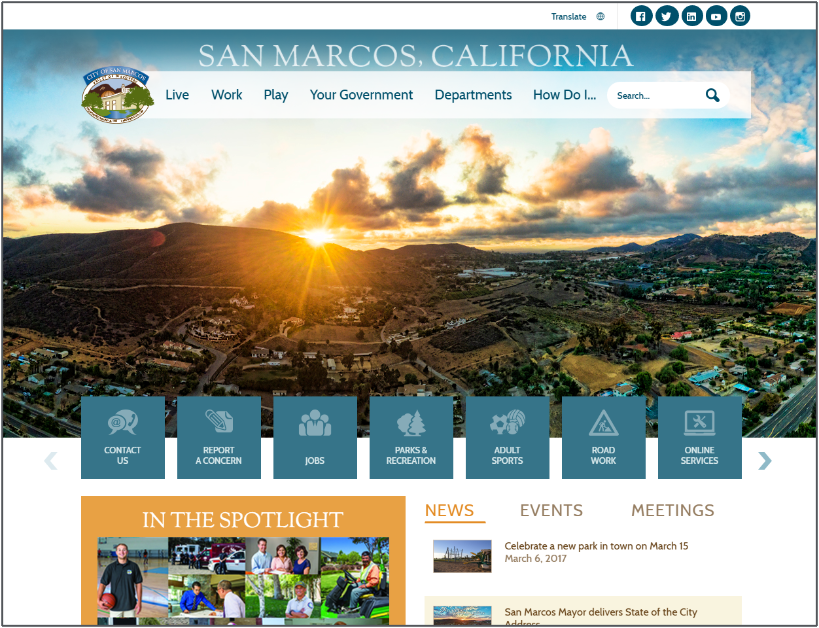3 Reasons Why You Should Take a Research-driven Approach to Your Website Redesign
Planning a redesign of a local government website can be a challenge. Not only is the project typically managed by a committee, but keeping a wide range of stakeholders – who have a vested interest in various pieces of the website – engaged and aligned can make it difficult. In this environment, it can be tempting to share a survey with all staff and stakeholders in order to make decisions about the content and design of the site. However, rethinking the approach and focusing on research may actually be the key to a successful website redesign.
Here are three reasons why you should take a research-driven approach to your next website project:
Research will Align Your Goals with Your Customers’ Goals
Most local government redesigns start with a survey of staff in order to identify what information should be featured on the website. Despite their best intentions, this process often leads to the website prominently positioning what they feel is most important, which doesn’t always align with the residents’ perceptions of what’s important or relevant.
For example, Louisiana’s Calcasieu Parish Police Jury began their website redesign with an internal survey asking what information was most important to showcase on the website. Staff believed residents were interested in accessing agendas, minutes and the local government news channel. However, when a survey was conducted with their residents, the results revealed the top 3 searched-for items were actually Geographic Information Systems (GIS), permits and forms and jobs.

Taking the extra step to research what residents sought helped ensure the decisions made for the rest of the project aligned with the community.
Research will Help Simplify the Content Migration Process
Understanding what your users want and expect can help you to be much more strategic as you determine what existing information should be migrated over to the new website.
When the City of San Marcos, California started their redesign process, their website was disorganized, difficult to navigate and contained more than 10,000 pages of content. Focusing on the data, including surveys of residents, analysis of site search logs, lists of resident inquiries made by phone into the city and digging into analytics data to identify the most frequently accessed pages (as well as the least visited pages), the staff were able to gain a complete picture of what information needed to be moved to the new site. The resulting website was ultimately reduced by 97%, to just 383 pages.

Having the analytics as a guide allowed them to prioritize the most important content. Not only did this simplify the migration process, but they also saw a 370% increase in page views shortly after the new site launched.
Create a Better Experience for Your Residents
Through community surveys, heat mapping and website analytics, you’re able to get a clearer picture of how users interact with your website and what they seek.
The previous City of Raymore, Missouri website homepage had an overwhelming 65 clickable links to website content, but heat map studies showed that none of them were being used. Instead, users were going straight to the search bar to look up information they needed. Further analytics helped the City identify the top 10 most-visited pages, allowing them to narrow down the number of options to include on the homepage.

Heat mapping and website analytics allowed the City to redesign their homepage to feature a prominent search bear and homepage buttons to popular services, making access to information quick and easy for residents.
How Will You Approach Your Website Redesign?
Using a research-driven approach to website development helps uncover insights to why people visit your website and what they seek. Website analytics and extensive UX testing can also reveal how they want to engage with your agency and content.
It’s important to remember that your decision will be at the core of your overall digital strategy for years to come. When you opt for a data-driven approach, the result is an experience that your users will appreciate.
If you’re considering a website redesign but not interested in guessing what information your residents want to see, contact us to schedule a consultation to learn how Granicus can help.
